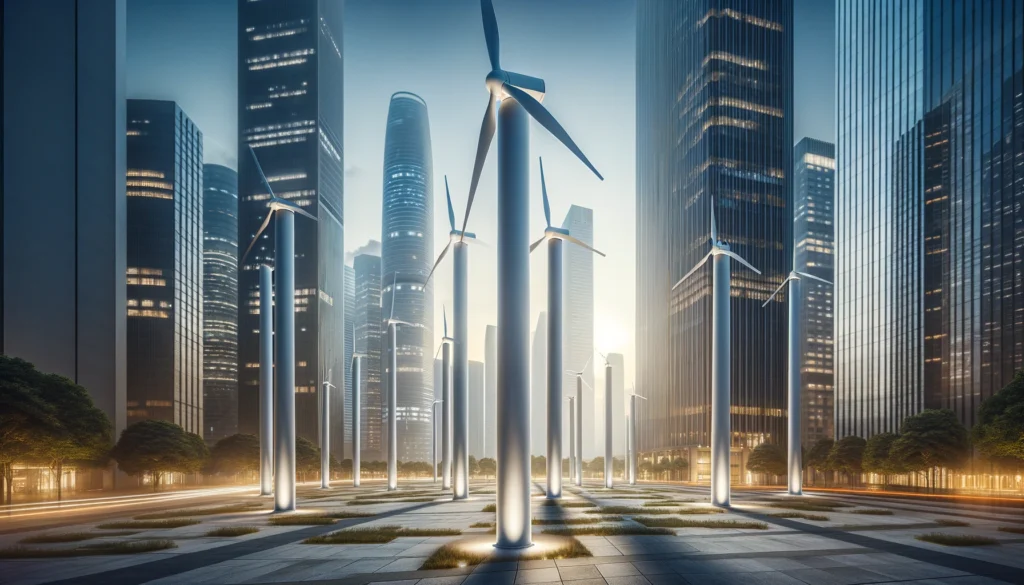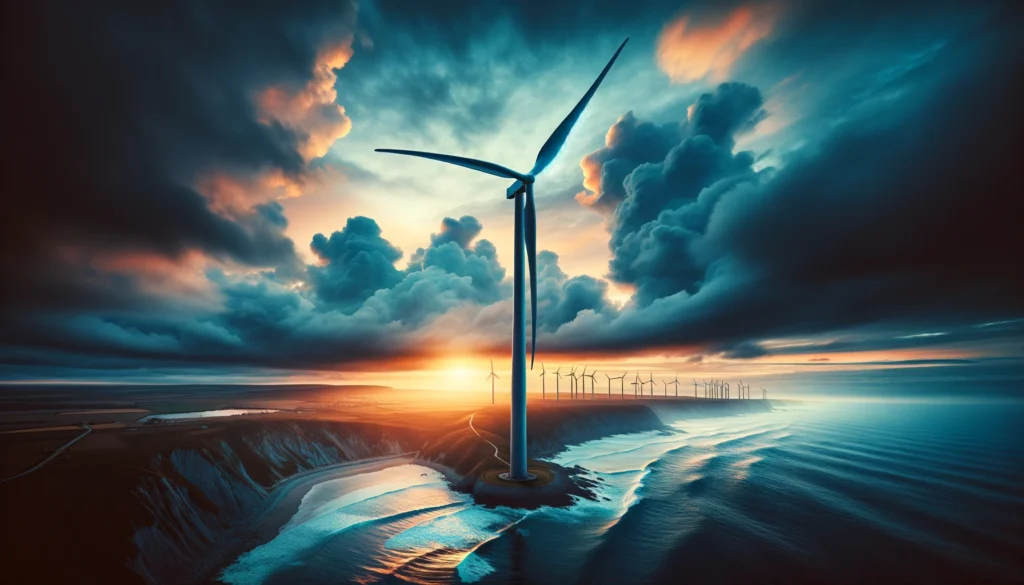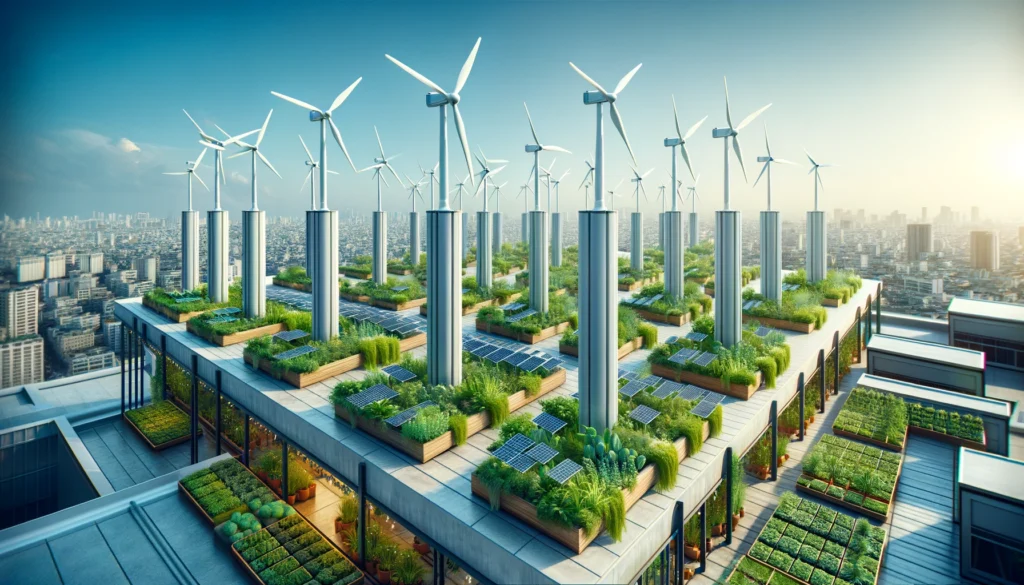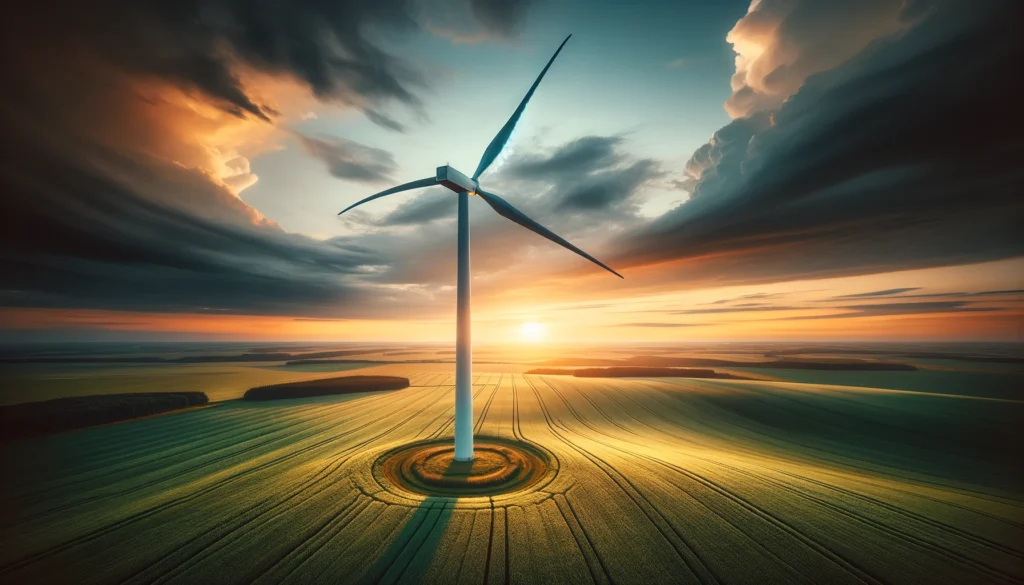Wind energy has emerged as a crucial player in the global transition towards sustainable power sources. Among the various types of wind turbines, two designs stand out: vertical axis wind turbines (VAWTs) and horizontal axis wind turbines (HAWTs). Each design comes with its own set of advantages and disadvantages, sparking a longstanding debate among researchers, engineers, and renewable energy enthusiasts. In this article, we’ll delve into the characteristics, pros, and cons of both VAWTs and HAWTs to determine which holds the title of being superior.
Table Of Content
We invite you to read: “What is Horizontal Axis Wind Turbine (HAWT)? Working & Its Applications”

Understanding Vertical Axis Wind Turbines (VAWTs)
VAWTs feature a vertically oriented rotor shaft, with blades that rotate around a central axis perpendicular to the ground. Unlike their horizontal counterparts, VAWTs typically have a compact design and can operate efficiently in changing wind directions. Additionally, VAWTs are often quieter and easier to maintain due to their simpler mechanical structure.
Pros of Vertical Axis Wind Turbines:
- Omni-directional Wind Capture: VAWTs can harness wind from any direction, making them suitable for areas with turbulent or unpredictable wind patterns.
- Lower Noise Levels: The design of VAWTs inherently produces less noise compared to HAWTs, making them more suitable for urban or residential areas.
- Ease of Maintenance: With fewer moving parts and a simpler design, VAWTs generally require less maintenance, reducing operational costs over time.
Cons of Vertical Axis Wind Turbines:
- Lower Efficiency: VAWTs often suffer from lower efficiency rates compared to HAWTs, mainly due to aerodynamic limitations and increased drag on the blades.
- Limited Scalability: Scaling up VAWTs can be challenging as the structural integrity of the turbine becomes more difficult to maintain with larger sizes.
We invite you to read: “Small-Scale Energy Revolution: Vertical Axis Wind Turbines for Homes”

Understanding Horizontal Axis Wind Turbines (HAWTs)
HAWTs feature blades that rotate around a horizontal axis, with the rotor shaft parallel to the ground. This design is more commonly seen in large-scale wind farms and has undergone significant advancements in technology and efficiency over the years.
Pros of Horizontal Axis Wind Turbines:
- Higher Efficiency: HAWTs generally exhibit higher efficiency rates compared to VAWTs, especially in steady wind conditions, due to improved aerodynamics and blade design.
- Scalability: HAWTs are more easily scalable to larger sizes, making them suitable for utility-scale wind farms that require high power output.
- Proven Technology: With decades of research and development, HAWTs have become a mature technology with a well-established supply chain, reducing manufacturing costs and increasing reliability.
Cons of Horizontal Axis Wind Turbines:
- Wind Direction Dependency: HAWTs require a consistent wind direction for optimal performance, making them less suitable for areas with turbulent or variable winds.
- Complex Maintenance: The gearbox and yaw mechanism of HAWTs can be complex and expensive to maintain, potentially increasing operational costs over time.
We invite you to read: “Vertical Axis Wind Turbines: Eco-Friendly Solutions for Urban Areas”

Conclusion
Choosing between VAWTs and HAWTs ultimately depends on the specific requirements of the project and the environmental conditions of the site. While VAWTs offer advantages in versatility, low noise, and simplified maintenance, HAWTs excel in efficiency, scalability, and proven technology. For urban or residential applications where space is limited and wind conditions are variable, VAWTs may present a more viable option. Conversely, for utility-scale wind farms aiming for maximum power output and efficiency, HAWTs remain the preferred choice. In the end, both designs play a crucial role in harnessing wind energy and driving the global transition towards a sustainable future.
FAQs
Which wind turbine design is more efficient?
HAWTs generally exhibit higher efficiency rates compared to VAWTs due to improved aerodynamics and blade design.
Are Vertical Axis Wind Turbines (VAWTs) quieter than Horizontal Axis Wind Turbines (HAWTs)?
Yes, VAWTs are often quieter due to their design, making them more suitable for urban or residential areas.
Which wind turbine design is better for utility-scale wind farms?
Horizontal Axis Wind Turbines (HAWTs) are typically preferred for utility-scale wind farms due to their scalability and higher efficiency.
You May Also Like
- The Power of Rotation: Vertical Axis Wind Turbines Explained
- Vertical Axis Wind Turbines: A Green Revolution on the Horizon
- Quiet and Efficient: The Advantages of Vertical Axis Wind Turbines
- Vertical Axis Wind Turbines: An Alternative to Traditional Wind Turbines?
- The Pros and Cons of Vertical Axis Wind Turbines
External Links
- WHAT IS VERTICAL AXIS WIND TURBINE (VAWT) AND HOW DOES IT WORK?
- Increasing the Power Production of Vertical-Axis Wind-Turbine Farms Using Synergistic Clustering
- What is Vertical Axis Wind Turbine : Working & Its Applications
- Magnetic Suspension and Self-pitch for Vertical-axis Wind Turbines
- Small Wind Turbines: Is A Horizontal Or Vertical More Efficient?

